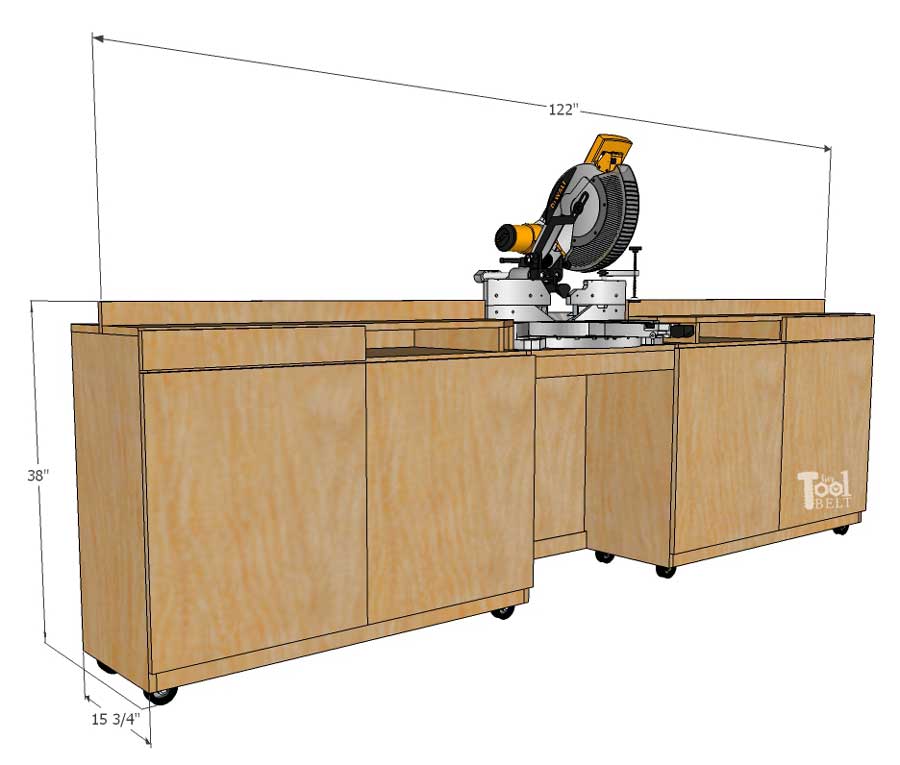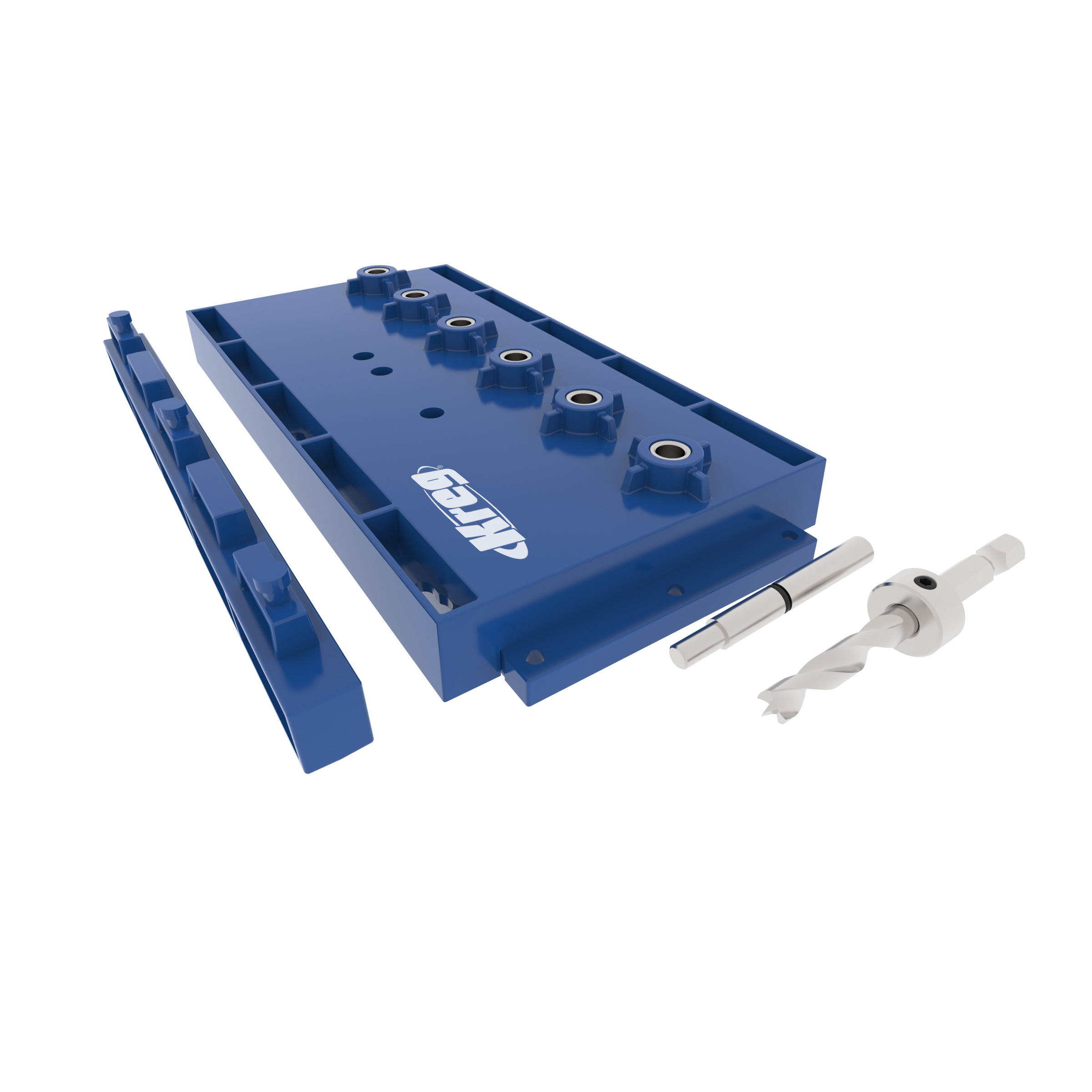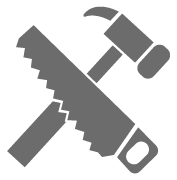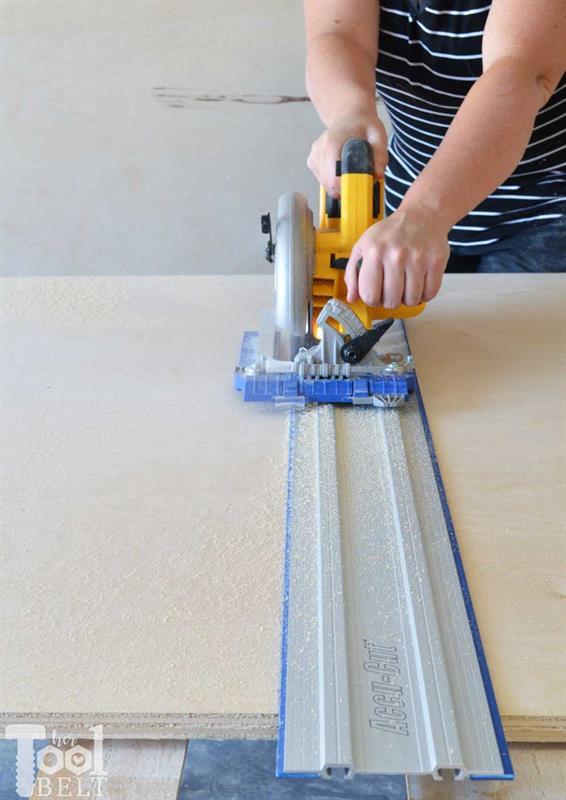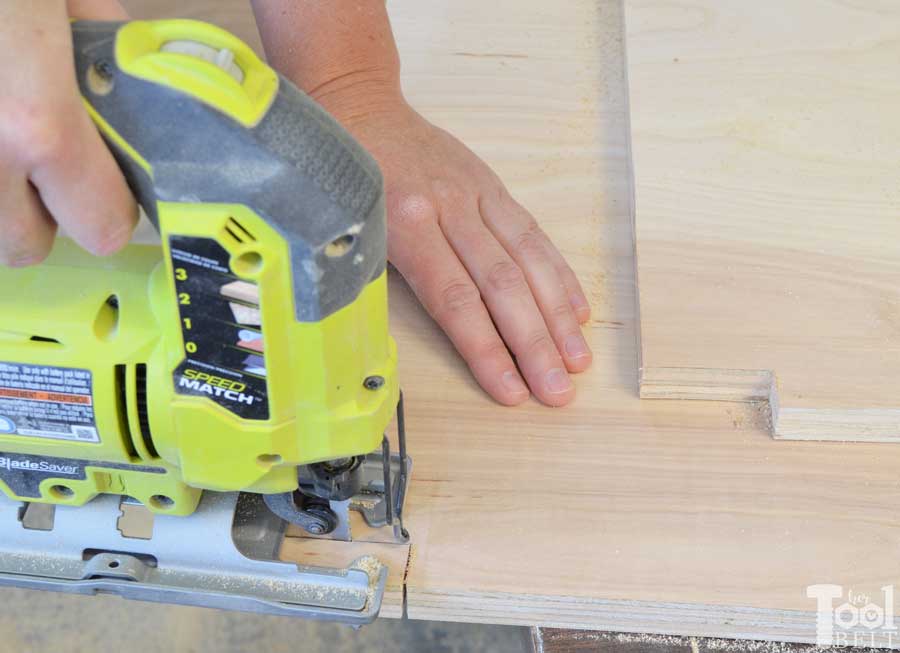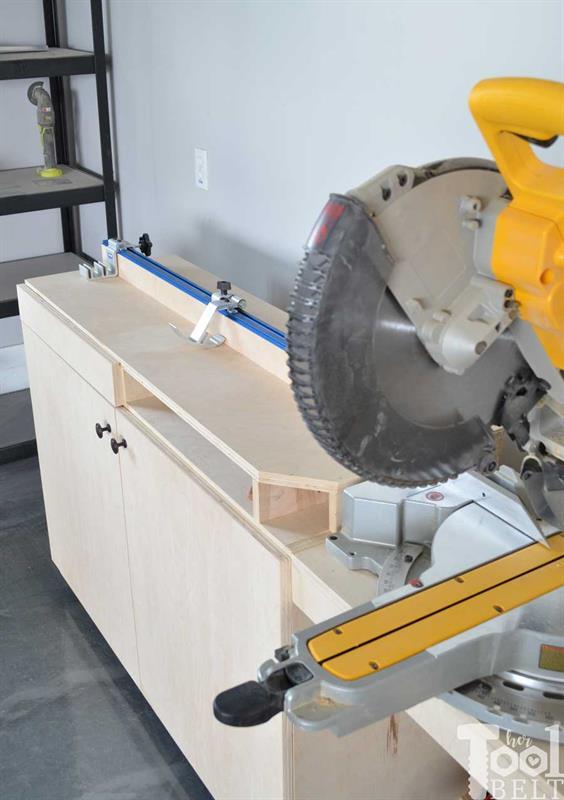Miter Saw Station and Storage
By HertoolbeltA mobile miter saw station for your garage or workshop to help you make precise cuts easily with the Precision Trak and Stop Kit and plenty of support for long boards. Below the miter saw table is tons of storage for tools and supplies.
Directions
-
Cut Plywood
Measure the width of the miter saw. (This plan uses a saw width of 26".) Adjust any cuts that are 26" to the width of your saw. Cut the plywood according to the cut diagram. The Accu Cut and Rip Cut are handy tools to cut the full plywood sheets into manageable sizes. Note: this plan uses plywood that is 3/4" thick (some '3/4"' plywoods do not measure 3/4").
-
Attach Skirt to Bottom
Drill pocket holes for 3/4" material in the ends of the cabinet bottom pieces. Drill pocket holes in the ends of the bottom skirt pieces and along one side. Use wood glue and 1 1/4" pocket hole screws to attach the bottom skirt pieces to the cabinet bottom, the bottom skirts should be flush with the bottom cabinet sides. Note: We will be making two cabinets that mirror each other, repeat each step but as a mirrored copy.
-
Attach Bottom to Outside
Place the bottom assembly on the 'cabinet side outside' piece. The bottom should be flush with the bottom of the cabinet side and front. The back will have a 1/4" inset. Use wood glue and 1 1/4" pocket hole screws to attach the bottom assembly to the cabinet side outside.
-
Attach Cabinet Top
Drill pocket holes for 3/4" material in both ends of the cabinet top. Clamp a table support (2 3/4") piece to the top of the 'cabinet side outside'. This will help get the cabinet top at the right height. Use wood glue and 1 1/4" pocket hole screws to attach the cabinet top 2 3/4" from the 'cabinet side outside' top.
-
Notch Boards
Use a jig saw or similar to cut a 3/4" x 2" notch from the cabinet dividers (see cut diagram). If your saw arm is wider than the saw base when rotated to it largest (smallest) cut angle, then you will need to notch out the 'cabinet side inside' pieces. If necessary, cut a 3" x 2 3/4" notch from the cabinet side inside pieces. If the 'cabinet side inside' pieces are notched, then also cut the angle from the front table. You can match the swing angle of the miter saw to the front table to make sure you give enough room.
-
Add Divider
Drill pocket holes for 3/4" material in both ends of the cabinet dividers. Measure and mark 22 7/8" from the cabinet side, this is where the side of the cabinet divider will go. Use wood glue and 1 1/4" pocket hole screws to attach the cabinet divider to the top and bottom.
-
Attach Side
Clamp a top support (2 3/4") piece to the top of the 'cabinet side inside'. Use wood glue and 1 1/4" pocket hole screws to attach the cabinet top and bottom assembly to the 'cabinet side inside'. Drill pocket holes in both ends and long side of the cabinet top support pieces. Use wood glue and 1 1/4" pocket hole screws and place under back of cabinet top and in notched area of cabinet divider. (It will be inset 1/4"). If desired, add 4 swivel casters. I used scrap 3/4" plywood under the casters to mount to the bottom of the cabinet with 4 - 1 1/4" screws.
-
Drill Shelf Pin Holes and Sliders
Drill holes in the cabinet for shelf pins/pegs. I placed the shelf pin jig 8 3/4" from the bottom of the cabinet and drilled the holes. Attach the 14" drawer sides to the cabinet now before the table top is in place.
-
Attach Top Supports
Drill 2 or more pocket holes for 3/4" material in a long side of the top support pieces. Measure and mark over 22 7/8" from the 'cabinet side outside' piece. Measure and mark over 4 1/4" from the 'cabinet side inside' piece as shown. Use wood glue and 1 1/4" pocket hole screws to attach the top supports to the cabinet top.
-
Install Table and Fence
If your saw needs space to swing the arm, make sure the front table notch is on the side where the miter saw is. Use wood glue and 1 1/4" minimum length brad nails and attach the front table to the top of the cabinet sides and top supports. The front and sides of the front table piece should all be flush. Use wood glue and 1 1/4" minimum brad nails to attach the fence vertically to the back of the front table piece. Use wood glue and 1 1/4" minimum brad nails to attach the back table to the fence and the cabinet sides and top supports.
-
Miter Saw Table Height
Place the miter saw on the miter saw shelf plywood piece on a table. Use a square and measure the distance from the miter saw table to the bottom of the plywood.
-
Attach Shelf Support
Measure and mark the miter saw table + plywood height previously measured. Measure from table top and mark onto the cabinet side. Inset the shelf support 3/4" from the cabinet front. Use wood glue and brad nails and/or screws to attach the shelf support to the cabinet side.
-
Secure Miter Saw Shelf
Drill pocket holes for 3/4" material in both ends of the bottom brace and MS shelf face. Secure the bottom brace with wood glue and 1 1/4" pocket hole screws, inset 1/4" from the back. Secure the MS shelf face with wood glue and 1 1/4" pocket hole screws. Use wood glue and 1 1/4" minimum length brad nails to attach the miter saw shelf on top of supports.
-
Assemble Drawers
Drill pocket holes for 3/4" material in both ends of the drawer sides. Use wood glue and 1 1/4" pocket hole screws to secure drawer sides to drawer b/f. Use wood glue and 1 1/4" brad nails to attach drawer bottom to the bottom of the drawer sides. Attach 14" drawer slides to the drawer b/f (14" side).
-
Attach Accessories
Attach cabinet doors to the cabinet. I used frameless full overlay concealed hinges. Attach door knobs as desired. Attach drawer front to drawer. Attach the Precision Trak and Stop Kit to the fence per manufacturers instructions.






